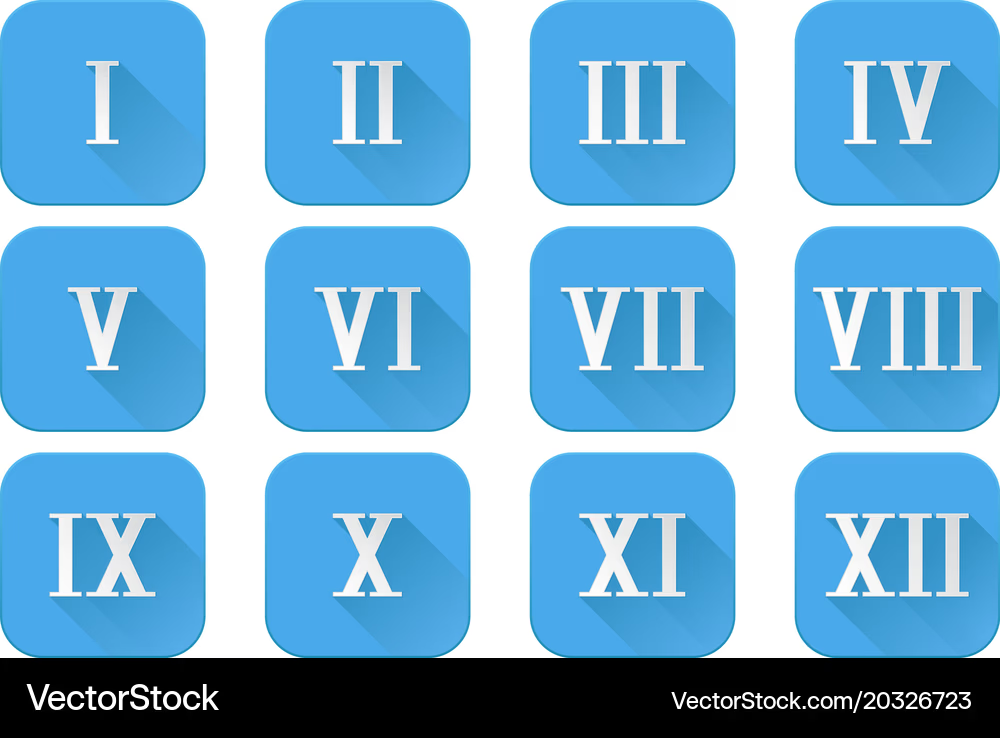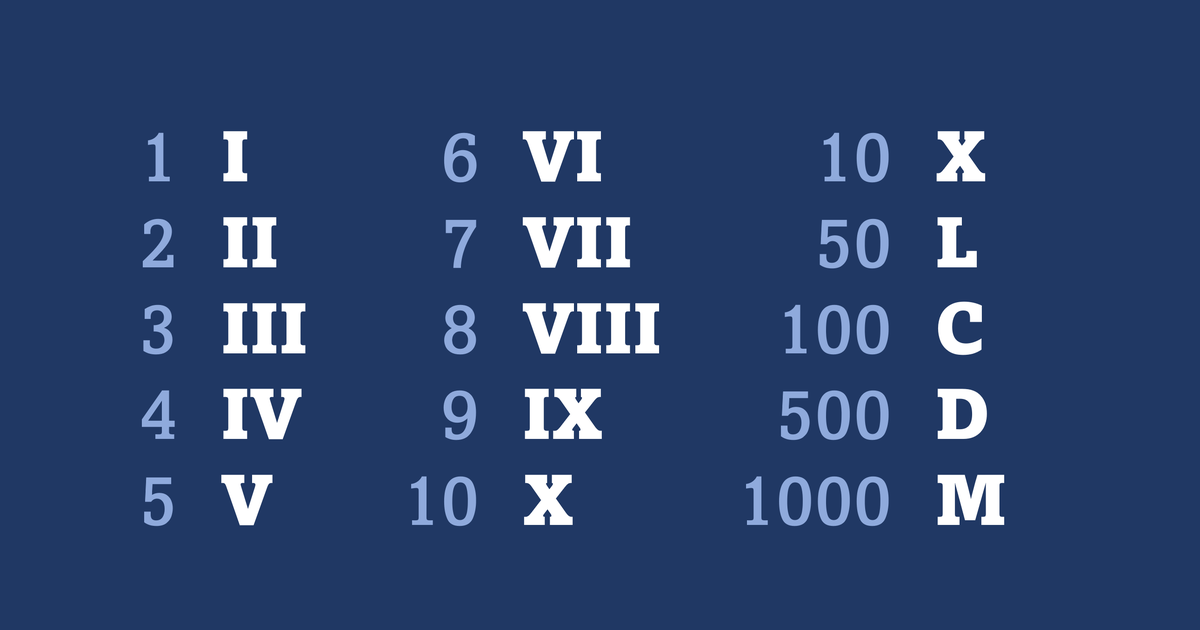Roman number is one of the oldest ways people used to write numbers. You may have seen roman numbers in movies, books, or even on clocks. These numbers use letters like I, V, X, L, C, D, and M instead of regular digits. Long ago, people in ancient Rome used roman numbers to count, trade, and build great places like temples and roads. Even though we use normal numbers today, roman numbers are still used in many parts of life, like for movie names, king names, and school books. They remind us of the smart ways people in the past counted and wrote numbers before modern math was born.
Roman number is simple once you understand how it works. Each letter has a value, and when you mix them in the right order, you can make any number you want. For example, “I” means one, “V” means five, and “X” means ten. When you put them together, you get numbers like IV (four) or XII (twelve). This way of counting helps students and kids learn how numbers can be written in different ways. It also shows that math has a long story behind it. Learning roman numbers can be fun, and it helps you understand history, language, and numbers all at once.
Table of Contents
Roman Number: The Old Way of Writing Numbers That Still Matters Today

Roman number is one of the oldest ways to show numbers. It started thousands of years ago in ancient Rome. Instead of using normal digits like 1, 2, and 3, people used letters from the alphabet — I, V, X, L, C, D, and M. You can still see roman numbers today on clocks, movie names, and book pages. These numbers are part of history and are still useful for learning and fun.
Roman number is not just an old style of counting; it’s a system that teaches us how smart ancient people were. Even without calculators or modern math, they made a simple rule-based way to count, trade, and write dates. Kids often find roman numbers fun because it feels like solving a puzzle. When you understand it once, you can easily read and write them.
What Is Roman Number? The Easy Meaning for Everyone
Roman number means a numbering system that uses Latin letters instead of normal digits. Each letter stands for a number. For example:
- I = 1
- V = 5
- X = 10
- L = 50
- C = 100
- D = 500
- M = 1000
These letters can be mixed to form other numbers. For example, II means 2, IV means 4, and IX means 9. It may look confusing at first, but once you understand the rule, it’s very simple to use.
How Roman Number Started in Ancient Rome
Roman number began in ancient Rome around 500 BC. People needed an easy way to count money, record trade, and mark years. Since most Romans didn’t use zero, they created roman numbers using letters. This made it easy to carve on stones, write in books, and count during business deals.
At that time, roman numbers were everywhere — on temples, coins, and city walls. The system spread with the Roman Empire and became famous across Europe. Even after Rome fell, roman numbers stayed alive because people used them in churches, books, and schools.
Simple Rules to Read and Write Roman Number
Roman number looks tricky, but it follows simple rules:
- If a smaller letter comes after a bigger one, you add it.
Example: VI = 5 + 1 = 6 - If a smaller letter comes before a bigger one, you subtract it.
Example: IV = 5 – 1 = 4 - Don’t repeat a letter more than three times in a row.
Example: III = 3 (but not IIII for 4) - Write from largest to smallest from left to right.
Once you know these small rules, you can read any roman number easily.
Roman Number Chart for Quick Learning
| Roman Number | Normal Number |
| I | 1 |
| II | 2 |
| III | 3 |
| IV | 4 |
| V | 5 |
| VI | 6 |
| VII | 7 |
| VIII | 8 |
| IX | 9 |
| X | 10 |
| XX | 20 |
| XL | 40 |
| L | 50 |
| C | 100 |
| D | 500 |
| M | 1000 |
This chart helps you learn roman numbers fast. You can print it or save it for easy reference.
Why We Still Use Roman Number Today
Even in today’s world, roman number is still used in many ways. You can see them on clocks, book chapters, movie titles, and even sports events like the Olympic Games or Super Bowl. Many schools also teach roman numbers to help children understand counting in a new way.
Using roman numbers gives a special, classic look. For example, kings and queens use them in their names like Queen Elizabeth II or King Henry VIII. They make things look more royal and historical.
Fun Facts About Roman Number You Should Know
- Roman number has no zero. The Romans didn’t need it!
- The biggest roman number commonly used is MMMCMXCIX, which means 3999.
- Roman number is used in scientific names, clocks, and outlines.
- Old movies often show years in roman numbers at the end of credits.
- Even famous brands use roman numbers to look elegant and timeless.
Roman Number in Clocks, Movies, and Daily Life
Roman number is still part of our daily life. Many wall clocks use roman numbers for their hour marks. Some movie sequels like “Rocky II” or “Iron Man III” use them too. In books, you might see roman numbers for chapters or pages in the introduction.
These numbers make things look formal and classic. For example, a clock showing “IV” for four or “XII” for twelve looks beautiful and traditional. That’s why many designers and artists prefer roman numbers — they add a touch of history to modern life.
Common Mistakes People Make with Roman Number
Many people write roman numbers the wrong way. Here are a few common mistakes:
- Writing IIII instead of IV for 4
- Using letters in the wrong order, like IC for 99 instead of XCIX
- Repeating letters more than three times
These small errors can change the meaning of the number. That’s why it’s good to follow the main rules carefully.
Easy Tips to Teach Kids Roman Number
Roman number can be fun for kids to learn. Here are some tips:
- Start with small numbers like I, V, and X.
- Use flashcards or fun charts.
- Play games with roman numbers on clocks.
- Tell them how kings and queens use these numbers in names.
When learning feels like a story, kids remember it better. They will soon start reading roman numbers everywhere — in books, clocks, and even movies!
Roman Number vs Modern Numbers: What’s the Difference?
Modern numbers (1, 2, 3…) are easier for math and daily use, but roman numbers are better for showing style, history, and order. Modern numbers came from Arabic numerals, which include zero and can make big calculations faster. Roman numbers are better for writing dates, labels, and important names.
So, both have their own beauty — roman numbers for art and history, modern numbers for math and business.
How to Convert Normal Numbers into Roman Number
To convert, you can follow this idea:
- 1 = I
- 4 = IV
- 5 = V
- 9 = IX
- 10 = X
- 40 = XL
- 50 = L
- 100 = C
- 500 = D
- 1000 = M
You just need to break down the normal number into parts and write each using roman letters. For example:
2025 = 2000 + 20 + 5 → MM + XX + V = MMXXV
Conclusion
Roman number is not just old math — it’s a story of human creativity. It connects us with ancient Rome and shows how people counted long ago. Learning roman numbers helps students understand patterns, history, and logic. Even today, these numbers are part of our culture — from clocks to royal names to movie titles.
So next time you see a roman number, take a moment to read it. You’ll realize it’s not just a letter mix — it’s a piece of living history that still shines today
FAQs
Q1: What is the meaning of roman number?
Roman number means writing numbers using letters like I, V, X, L, C, D, and M. It was used by ancient Romans.
Q2: Where do we use roman number today?
We use roman numbers on clocks, in books, for movie titles, school lessons, and even in royal names.
Q3: Why should kids learn roman number?
It helps kids understand counting rules, number order, and old history in a fun way.



